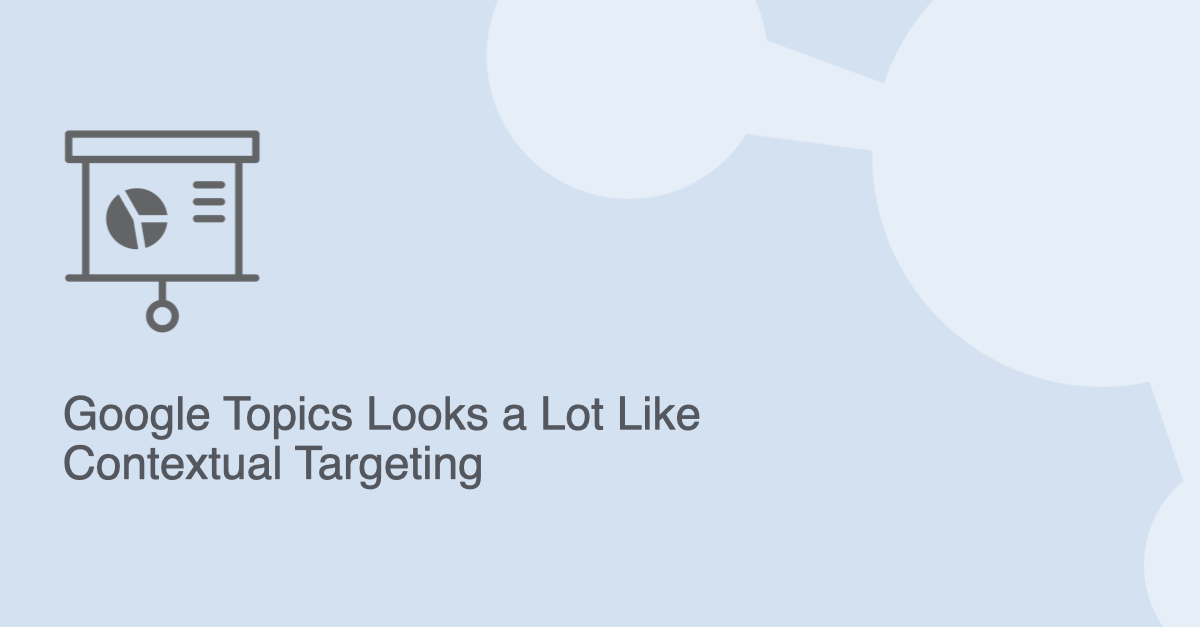Peer39's 2023 Programmatic CTV Benchmark Report: What Lies Beyond the Tip of the CTV Iceberg
Fortune 500 Brands account for 45% of all ads observed on Fake CTV & Divisive News content channels That's only one of the surprising truths that...
2 min read
 David Simutis
:
Jan 26, 2022 1:52:58 PM
David Simutis
:
Jan 26, 2022 1:52:58 PM

Google’s recent announcement regarding the Topics API is the next step in the evolution to a cookieless world. If you weren’t keeping up with all the relevant proposals, here is a summary of what’s happening and why it’s relevant.
The Topics API is replacing Google’s FLoC proposal, which assigned users to certain audience groups by web behavior, tracked by the browser. Users were still being monitored by Google, much in the same way cookies track users across sites. The main difference was that site visitation was not broadcast under FLoC, but was confined to the browser.
While this improved user privacy in some ways, FLoC was not tested in Europe due to GDPR issues, including:
For Google’s solution to work, it needs to function in Europe – so Topics attempts to solve FLoC’s shortcomings. The key elements of the Topics proposal are:
To simplify it – for each of the past three weeks, Google will look at what content you consumed. Based on this consumption, Google will generate five Topics for each week and add a random one. Of those, only one will be sent in response to an ad request. Since this is done for the last three weeks, each ad request gets three Topics.
The Topic determination is interesting – it will be based on the domains and subdomains that a user visits. Google specifically says it will not parse article text to determine the content being consumed by the user and will not look at the page URL. While this is still a form of behavioral targeting, it looks quite a bit like contextual targeting – but lacking specificity such as keywords, sentiment, or more specific page level understanding.
Users will also have significantly more control and insight versus FLoC. Consumers will have the ability to see what Topics they are assigned and also the ability to opt out from Topics entirely. This is an important point, as Google must find a way to satisfy GDPR informed consent requirements. We would not be surprised to see an upfront “Topic banner” asking consumers for approval to be included in this targeting. Depending on how Google implements it, we could see minimal opt in, similar to what we’ve seen with Apple and IDFA.
The bottom line is that privacy seems to have driven the transition from FLoC to Topics. The targeting available via the Topics API is broad by design and seems to be somewhat analogous to legacy contextual strategies. As a result, more sophisticated and nuanced cookieless segmentation and understanding is only growing in value.
This move creates more clarity around what signals will be universally used and now sharpens that lens to contextual. Armed with a clearer picture on the future, advertisers and buyers will be well served to develop contextual learnings about their current audience work. We are actively investing and engaging with the digital media community in this area helping brands and their partners to prepare.
Reach out to sales@peer39.com to get started.

Fortune 500 Brands account for 45% of all ads observed on Fake CTV & Divisive News content channels That's only one of the surprising truths that...
-1.png)
The accelerated trend of smartTV and streaming-service adoption was fueled largely by pandemic lockdowns. Consumers expect more choice, flexibility...